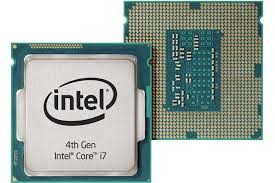
Introduction
In the realm of computer fundamentals, few components are as crucial as the Central Processing Unit, or CPU. This silicon marvel acts as the brain of your computer, orchestrating every operation, from launching applications to rendering complex graphics. In this article, we’ll embark on a journey to unravel the intricacies of computer CPUs, exploring their evolution, architecture, and the role they play in your everyday digital experiences.
The Birth of CPUs: A Historical Perspective
Early Days of Computing (H1)
Before we dive into modern CPUs, let’s take a step back in time to the birth of computing. Early computers like the ENIAC and UNIVAC relied on vacuum tubes and punched cards to process information.
The Advent of Microprocessors (H2)
The 1970s marked a significant milestone with the introduction of microprocessors. Intel’s 4004, the first commercially available microprocessor, paved the way for the compact and powerful CPUs we use today.
Anatomy of a CPU
Core Components (H3)
A CPU comprises several key elements, including the Arithmetic Logic Unit (ALU), Control Unit, and Registers. These components work together to execute instructions and perform calculations.
Clock Speed and Performance (H3)
The clock speed of a CPU, measured in gigahertz (GHz), determines how quickly it can process instructions. Higher clock speeds generally translate to better performance.
CPU Architectures
CISC vs. RISC (H4)
Two prevalent CPU architectures, Complex Instruction Set Computing (CISC) and Reduced Instruction Set Computing (RISC), differ in their approach to processing instructions. We’ll explore their pros and cons.
Multi-Core CPUs (H4)
Modern CPUs often feature multiple cores, allowing them to handle multiple tasks simultaneously. We’ll delve into the advantages of multi-core processors.
The Role of Cache Memory
Levels of Cache (H3)
Cache memory plays a pivotal role in CPU performance. We’ll discuss the various levels of cache and how they optimize data access.
Evolution of CPU Technology
Shrinking Transistors (H2)
Moore’s Law has driven continuous innovation in CPU manufacturing, leading to the miniaturization of transistors and an increase in CPU performance.
Quantum Computing (H2)
The future of CPUs may lie in quantum computing, promising unprecedented processing power. We’ll explore the potential of this groundbreaking technology.
Choosing the Right CPU
Factors to Consider (H3)
When buying a computer or building one from scratch, selecting the right CPU is crucial. We’ll provide guidance on factors to consider, such as intended use and budget.
Conclusion
In conclusion, the CPU is the beating heart of your computer, responsible for executing instructions and ensuring a seamless user experience. Understanding its architecture and evolution empowers you to make informed choices when it comes to your computing needs.